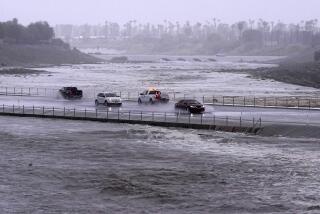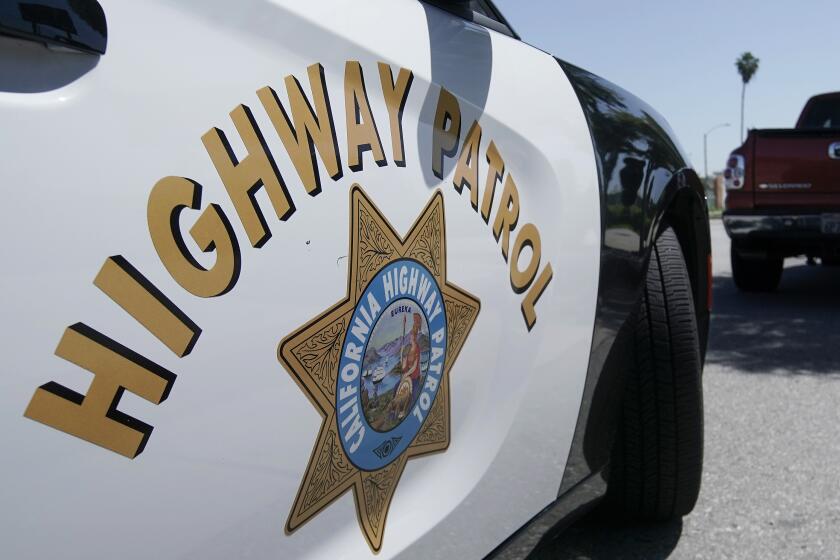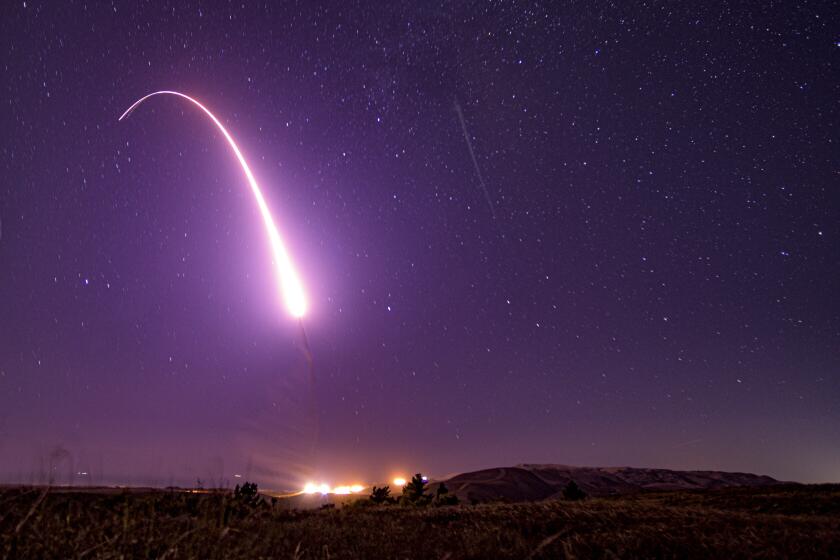Radar Scans Valley for Rainfall Figures
- Share via
You don’t need a weatherman to know that if you spent much time outside Wednesday, you probably got wet.
But just how wet did your neighborhood get?
Only a few years ago, when weather forecasters relied solely on rain gauges to determine precipitation amounts, you couldn’t get an accurate reading for your area unless one of the gauges happened to be located nearby.
Your precipitation total might not be the same as in the neighborhood down the road, and it could be considerably less or more than in other parts of the San Fernando Valley--an area often portrayed as a homogenous unit.
Rain gauges are still an indispensable tool for meteorologists. But used in conjunction with a national network of high-tech weather radars and computers, weather officials can now deliver a detailed portrait of how much rain has fallen, within a mile, on any given day in almost any part of the United States.
That marriage of old and new technology was used in making this map, which shows--with far more accuracy than previously possible over a large area--how much precipitation fell on the San Fernando Valley and a portion of the Santa Clarita Valley on Wednesday.
“We use the radar to take exact slices of a storm, in much the same way that a CAT scan takes slices of the body,” said Mike Smith, president of WeatherData, a Kansas City company that provides weather data to The Times.
The radar, however, cannot tell the whole story.
“It’s accurate for the area it sees, but it can miss some of the actual rainfall,” said Jon Erdman, a meteorologist at WeatherData. “This is especially true where you have mountains, like those on the edge of the San Fernando Valley.”
Rain gauge readings are used to establish base rainfall figures. The radar data can then fill in the gaps between gauges, making estimates based on the amount of precipitation detected in the atmosphere by the radar.
The official rain gauges that filed reports as of Wednesday evening were located in Chatsworth, Newhall and Northridge. The closest radar unit, located on Sulphur Mountain in Ventura County, filled in the rest of the picture.
The official name of this type of radar, developed in 1988, is Weather Surveillance Radar 1988 Doppler, or WSR-88D for short.
Shortly after it was developed, three federal agencies--the departments of defense, transportation and commerce--came together to sponsor a project to install the units all over the country. The first went into service in 1990 in Oklahoma and there are more than 100 now, providing coverage of 92% of the contiguous 48 states, Smith said. Hawaii is also completely covered, as are Alaska’s most populated areas.
The Times plans to periodically run this local rain map during the winter storm season.
(BEGIN TEXT OF INFOBOX / INFOGRAPHIC)
Rain in Your Neighborhood
This map shows the amounts of rain that fell on different parts of the San Fernando Valley and Santa Clarita valleys on Wednesday from 7:30 a.m., when the first showers of the day arrived to 7:15 p.m. Relative rainfall amounts were measured by a doppler radar unit that can estimate the amount of precipitation in an area approximately a mile square.
* Source: WeatherData Inc.
More to Read
Sign up for Essential California
The most important California stories and recommendations in your inbox every morning.
You may occasionally receive promotional content from the Los Angeles Times.











